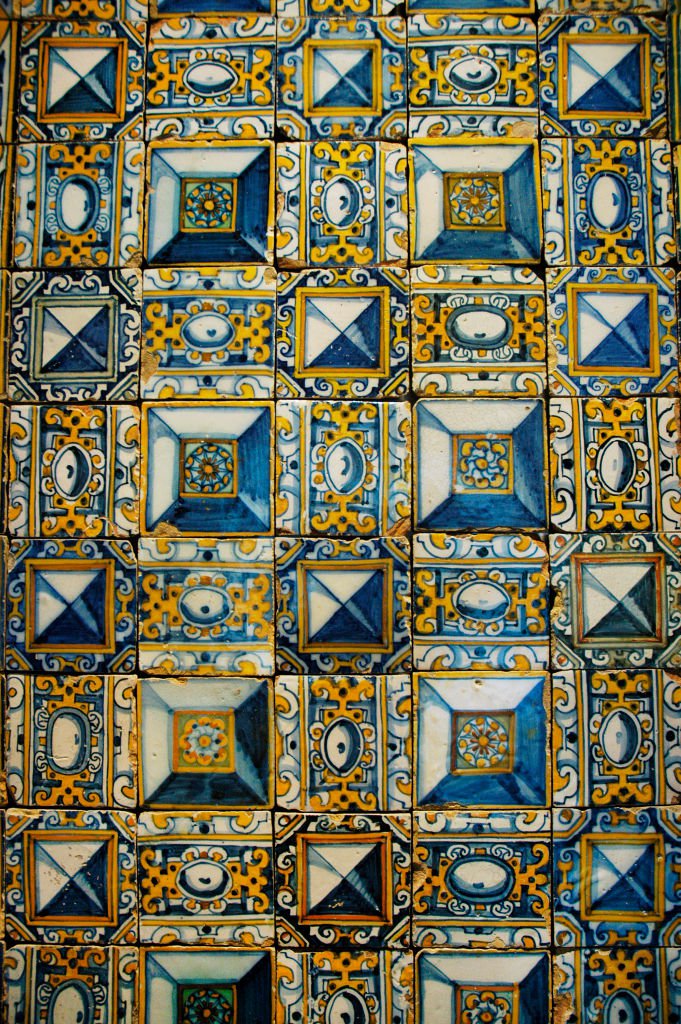From a few steps back, the artfully painted panorama of Lisbon at the National Azulejo Museum is an impressive sea of blue and white. Portraying every cathedral, bridge and shipyard in Portugal’s capital city as it looked just before a devastating 8.5-magnitude earthquake in 1755 means the work wraps around the entire room.
Step up close to examine the 280-year-old brush stroke details, and appreciation for the piece shifts. Rather than spanning a single enormous canvas or sheet of paper, the complex scene, widely attributed to Spanish artist Gabriel del Barco, plays out across 75 feet of ceramic tiles painstakingly fitted together to form an elaborate mosaic.
Grande Panorama de Lisboa, c. 1700 National Azulejo Museum
The glazed ceramic tilework, known as azulejo, is prominent across the interiors and exteriors of Portugal, and this example is a featured display at the 9,800-square-foot museum in Lisbon devoted to telling the complex backstory behind the art form. A sign near the museum’s entryway refers to the tilework as “an identity art” of distinct “Portuguese taste.”
In other words, to get a real sense of the azulejo tradition is to get a real sense of Portugal.
Detail of a 17th-century tiled panel at the National Azulejo Museum in Lisbon, Portugal PHAS/Universal Images Group via Getty Images
The term azulejo comes from the Arabic word azzelij, meaning “little polished stone.” The tilework dates back to the 13th century, in the period just after the Moors invaded Portugal and brought parts of their culture to their invaded lands. But it wasn’t until the 16th century that azulejos became a more popular fixture in Portugal. At that time, powerful leaders in the monarchy or church commissioned the mosaics, and production started to take place in-country.
Today, the materials, especially the distinctive blue ink used on the tiles, tend to be sourced from factories in Portugal, and are not readily available elsewhere. First, the tiles are baked in an oven. Then, an artist spreads each individual glaze color (yellow and green are also common)—made from potent ink diluted with just the right amount of water—over a compact powder on the surface of the tile. Once the glaze is applied,…
Click Here to Read the Full Original Article at Travel | smithsonianmag.com…
